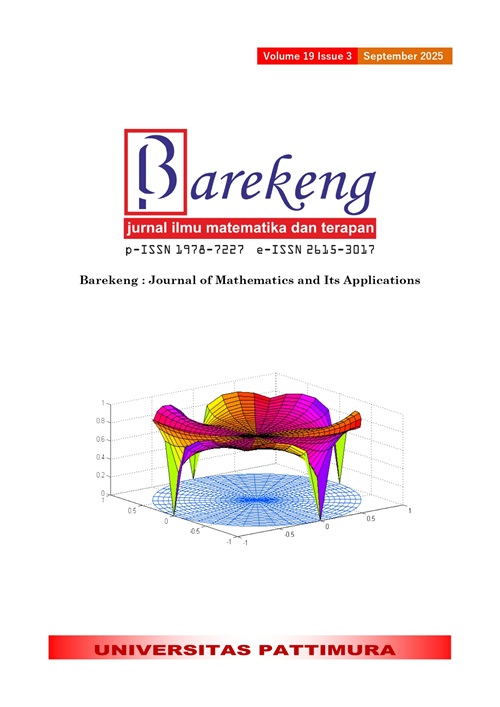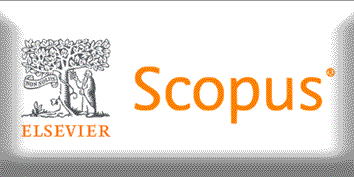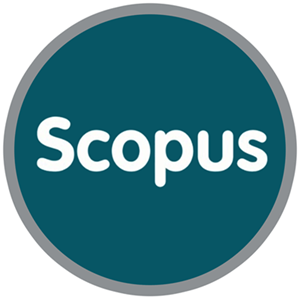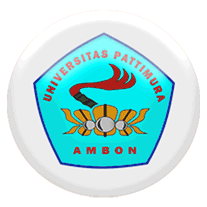APPLICATION OF GPU-CUDA PARALLEL COMPUTING TO THE SMITH-WATERMAN ALGORITHM TO DETECT MUSIC PLAGIARISM
Abstract
This study introduces the Smith-Waterman algorithm because the advantage of this algorithm is that it can determine the similarity from any position that corresponds to music plagiarism, considering that song similarities can occur in any part of a song. Plagiarism detection can be done by comparing the melody notes of 2 songs to determine whether or not there are similarities. Songs that are identified as plagiarism have similar melodies of 8 bars. However, the Smith-Waterman algorithm has a weakness, namely that the speed of this algorithm is relatively slow, so parallel computing is required to speed up the detection process. Parallel computing relies on the capabilities of multi-core GPUs that can be programmed using CUDA. Therefore, the innovation raised in this study is to speed up the computing process in detecting music plagiarism by applying parallel computing to the Smith-Waterman algorithm. The methodology stages begin with melody extraction, namely taking the song melody from the MIDI file along with the melody's tempo in the MIDI file and then transposing it to the basic tone of C. The study's results showed that using the GPU can speed up the execution time by up to 5.7 times compared to using the CPU. In addition, validation was carried out with real music plagiarism cases and validation of the results using the MIPPIA website. This shows that parallel computing has been successfully applied to the Smith-Waterman algorithm in detecting music plagiarism.
Downloads
References
N. T. S. Saptadi et al., PENGANTAR TEKNOLOGI INFORMASI, vol. 1, no. 1. 2023.
A. Sabiq, H. Yugaswara, and H. Wicaksono, “SISTEM KOMPUTASI PARALEL MENGGUNAKAN GPU BERBASIS NVIDIA CUDA,” ORBITH, vol. 17, no. 2, pp. 158–164, 2021.
S. Zhu et al., “INTELLIGENT COMPUTING: THE LATEST ADVANCES, CHALLENGES, AND FUTURE,” Intell. Comput., vol. 2, 2023, doi: https://doi.org/10.34133/icomputing.0006.
M. Vaithianathan, M. Patil, S. F. Ng, and S. Udkar, “COMPARATIVE STUDY OF FPGA AND GPU FOR HIGH-PERFORMANCE COMPUTING AND AI,” Int. J. Adv. Comput. Technol., vol. 1, no. May 2023, pp. 37–46, 2023, doi: 10.56472/25838628/IJACT-V1I1P107.
M. Schubiger, G. Banjac, and J. Lygeros, “GPU ACCELERATION OF ADMM FOR LARGE-SCALE QUADRATIC PROGRAMMING,” J. Parallel Distrib. Comput., vol. 144, pp. 55–67, 2020, doi: https://doi.org/10.1016/j.jpdc.2020.05.021.
M. Aslam, O. Riaz, S. Mumtaz, and A. D. Asif, “PERFORMANCE COMPARISON OF GPU-BASED JACOBI SOLVERS USING CUDA PROVIDED SYNCHRONIZATION METHODS,” IEEE Access, vol. 8, pp. 31792–31812, 2020, doi: https://doi.org/10.1109/ACCESS.2020.2973669.
A. Gormantara and Pranowo, “PARALLEL SIMULATION OF PATTERN FORMATION IN A REACTION-DIFFUSION SYSTEM OF FITZHUGH-NAGUMO USING GPU CUDA,” AIP Conf. Proc., vol. 2217, no. April, 2020, doi: https://doi.org/10.1063/5.0000667.
A. Asaduzzaman, A. Trent, S. Osborne, C. Aldershof, and F. N. Sibai, “IMPACT OF CUDA AND OPENCL ON PARALLEL AND DISTRIBUTED COMPUTING,” 2021 8th Int. Conf. Electr. Electron. Eng. ICEEE 2021, pp. 238–242, 2021, doi: https://doi.org/10.1109/ICEEE52452.2021.9415927.
P. R. Kommera, S. S. Muknahallipatna, and J. E. McInroy, “OPTIMIZED CUDA IMPLEMENTATION TO IMPROVE THE PERFORMANCE OF BUNDLE ADJUSTMENT ALGORITHM ON GPUs,” J. Softw. Eng. Appl., vol. 17, no. 04, pp. 172–201, 2024, doi: https://doi.org/10.4236/jsea.2024.174010.
M. Afif, Y. Said, and M. Atri, “COMPUTER VISION ALGORITHMS ACCELERATION USING GRAPHIC PROCESSORS NVIDIA CUDA,” Cluster Comput., vol. 23, no. 4, pp. 3335–3347, 2020, doi: https://doi.org/10.1007/s10586-020-03090-6.
K. Kaur, S. Chakraborty, and M. K. Gupta, “ACCELERATING SMITH-WATERMAN ALGORITHM FOR FASTER SEQUENCE ALIGNMENT USING GRAPHICAL PROCESSING UNIT,” in Journal of Physics: Conference Series, 2022, vol. 2161, no. 1, doi: https://doi.org/10.1088/1742-6596/2161/1/012028.
S. Petti et al., “END-TO-END LEARNING OF MULTIPLE SEQUENCE ALIGNMENTS WITH DIFFERENTIABLE SMITH–WATERMAN,” Bioinformatics, vol. 39, no. 1, 2023, doi: https://doi.org/10.1093/bioinformatics/btac724.
L. You et al., “GPU-ACCELERATED FASTER MEAN SHIFT WITH EUCLIDEAN DISTANCE METRICS,” in Proceedings - 2022 IEEE 46th Annual Computers, Software, and Applications Conference, COMPSAC 2022, 2022, pp. 211–216, doi: https://doi.org/10.1109/COMPSAC54236.2022.00037.
A. Gormantara, “Analisis Sentimen Terhadap New Normal Era di Indonesia pada Twitter Analisis Sentimen Terhadap New Normal Era di Indonesia pada Twitter Menggunakan Metode Support Vector Machine,” no. July, pp. 0–5, 2020.
M. N. A. Putera Khano, D. R. S. Saputro, S. Sutanto, and A. Wibowo, “SENTIMENT ANALYSIS WITH LONG-SHORT TERM MEMORY (LSTM) AND GATED RECURRENT UNIT (GRU) ALGORITHMS,” BAREKENG J. Ilmu Mat. dan Terap., vol. 17, no. 4, pp. 2235–2242, 2023, doi: https://doi.org/10.30598/barekengvol17iss4pp2235-2242.
A. A. Nareswari and D. T. Utari, “ADVANCEMENTS IN ALZHEIMER’S DIAGNOSIS THROUGH MRI USING BAYESIAN CONVOLUTIONAL NEURAL NETWORKS AND VARIATIONAL INFERENCE,” BAREKENG J. Ilmu Mat. dan Terap., vol. 18, no. 4, pp. 2423–2434, 2024, doi: https://doi.org/10.30598/barekengvol18iss4pp2423-2434.
R. Hidalgo, A. Devito, N. Salah, A. S. Varde, and R. W. Meredith, “INFERRING PHYLOGENETIC RELATIONSHIPS USING THE SMITH-WATERMAN ALGORITHM AND HIERARCHICAL CLUSTERING,” Proc. - 2022 IEEE Int. Conf. Big Data, Big Data 2022, no. December, pp. 5910–5914, 2022, doi: https://doi.org/10.1109/BigData55660.2022.10020454.
M. Risnasari, M. A. Effindi, P. Dellia, L. Cahyani, N. Aini, and N. Aini, “COMPUTER BASED TEST USING THE FISHER-YATES SHUFFLE AND SMITH WATERMAN ALGORITHM,” KnE Soc. Sci., vol. 2021, pp. 353–360, 2021, doi: https://doi.org/10.18502/kss.v5i6.9224.
B. Sari and Y. Sibaroni, “DETEKSI KEMIRIPAN DOKUMEN BAHASA,” Ind. J. Comput., vol. 4, no. 3, pp. 87–98, 2019, doi: 10.21108/indojc.2019.4.3.365.
F. Alvi, M. Stevenson, and P. Clough, “PARAPHRASE TYPE IDENTIFICATION FOR PLAGIARISM DETECTION USING CONTEXTS AND WORD EMBEDDINGS,” Int. J. Educ. Technol. High. Educ., vol. 18, no. 1, 2021, doi: https://doi.org/10.1186/s41239-021-00277-8.
A. Khozaimi, H. Husni, Y. D. Pramudita, M. F. Adlim, F. H. Rachman, and I. O. Susanti, “CHATBOT CERDAS SEBAGAI HELPDESK OBJEK WISATA MENGGUNAKAN ALGORITMA SMITH-WATERMAN,” J. Teknol. Inf. dan Terap., vol. 10, no. 1, pp. 36–46, 2023, doi: https://doi.org/10.25047/jtit.v10i1.312.
J. Zhao, D. Taniar, K. Adhinugraha, V. M. Baskaran, and K. S. Wong, “MULTI-MMLG: A NOVEL FRAMEWORK OF EXTRACTING MULTIPLE MAIN MELODIES FROM MIDI FILES,” Neural Comput. Appl., vol. 35, no. 30, pp. 22687–22704, 2023, doi: https://doi.org/10.1007/s00521-023-08924-z.
R. Kubik et al., “DEVELOPMENT OF AN INTELLIGENT SYSTEM FOR SELECTING SONGS ACCORDING TO THE USER NEEDS,” CEUR Workshop Proc., vol. 2604, pp. 1251–1279, 2020.
J. N. Muhammad Irfan Reza Mahendra, “PERLINDUNGAN HUKUM PREVENTIF DAN REPRESIF TERHADAP PERBUATAN PLAGIARISME CIPTAAN LAGU ATAU MUSIK,” Nusant. J. Ilmu Pengetah. Sos., vol. 9, no. 4, pp. 1483–1490, 2022.
Z. Yin, F. Reuben, S. Stepney, and T. Collins, “‘A GOOD ALGORITHM DOES NOT STEAL – IT IMITATES’: THE ORIGINALITY REPORT AS A MEANS OF MEASURING WHEN A MUSIC GENERATION ALGORITHM COPIES TOO MUCH,” in Lecture Notes in Computer Science (including subseries Lecture Notes in Artificial Intelligence and Lecture Notes in Bioinformatics), 2021, vol. 12693 LNCS, pp. 360–375, doi: https://doi.org/10.1007/978-3-030-72914-1_24.
A. D. Ongriwalu and Y. Yunanto, “KARYA CIPTA LAGU DAN MUSIK DALAM BINGKAI ASAS PERLINDUNGAN HUKUM,” AL-MANHAJ J. Huk. dan Pranata Sos. Islam, vol. 5, no. 2, pp. 1369–1374, 2023, doi: https://doi.org/10.37680/almanhaj.v5i2.2781.
H. El Haji and L. Alaoui, “A CATEGORIZATION OF RELEVANT SEQUENCE ALIGNMENT ALGORITHMS WITH RESPECT TO DATA STRUCTURES,” Int. J. Adv. Comput. Sci. Appl., vol. 11, no. 6, pp. 268–273, 2020, doi: https://doi.org/10.14569/IJACSA.2020.0110635.
A. Widjaja, T. K. Gautama, S. F. Sujadi, and S. R. Harnandy, “HIGH PERFORMANCE COMPUTING ENVIRONMENT USING GENERAL PURPOSE COMPUTATIONS ON GRAPHICS PROCESSING UNIT,” J. Tek. Inform. dan Sist. Inf., vol. 7, no. 2, 2021, doi: https://doi.org/10.28932/jutisi.v7i2.3715.
K. Kaur, S. Chakraborty, and M. K. Gupta, “ACCELERATING SMITH-WATERMAN ALGORITHM FOR FASTER SEQUENCE ALIGNMENT USING GRAPHICAL PROCESSING UNIT,” J. Phys. Conf. Ser., vol. 2161, no. 1, 2022, doi: https://doi.org/10.1088/1742-6596/2161/1/012028.
B. Schmidt, F. Kallenborn, A. Chacon, and C. Hundt, “CUDASW ++ 4 . 0 : ULTRA ‑ FAST GPU ‑ BASED SMITH – WATERMAN PROTEIN SEQUENCE DATABASE SEARCH,” BMC Bioinformatics, 2024, doi: https://doi.org/10.1101/2023.10.09.561526.
Z. Xia et al., “A REVIEW OF PARALLEL IMPLEMENTATIONS FOR THE SMITH – WATERMAN ALGORITHM,” Interdiscip. Sci. Comput. Life Sci., vol. 14, no. 1, pp. 1–14, 2022, doi: https://doi.org/10.1007/s12539-021-00473-0.
V. Krishnakumar, “DETECTION OF SIMILAR MELODIES BY REPURPOSING ALGORITHMS FOR SEQUENCE ALIGNMENT AND STRING SEARCHING VIHAAN KRISHNAKUMAR,” Res. Arch. Rising Sch., pp. 1–7, 2023, doi: https://doi.org/10.58445/rars.814.
Copyright (c) 2025 Alfredo Gormantara, Ferdianto Tangdililing, Sean Coonery Sumarta

This work is licensed under a Creative Commons Attribution-ShareAlike 4.0 International License.
Authors who publish with this Journal agree to the following terms:
- Author retain copyright and grant the journal right of first publication with the work simultaneously licensed under a creative commons attribution license that allow others to share the work within an acknowledgement of the work’s authorship and initial publication of this journal.
- Authors are able to enter into separate, additional contractual arrangement for the non-exclusive distribution of the journal’s published version of the work (e.g. acknowledgement of its initial publication in this journal).
- Authors are permitted and encouraged to post their work online (e.g. in institutional repositories or on their websites) prior to and during the submission process, as it can lead to productive exchanges, as well as earlier and greater citation of published works.






1.gif)



